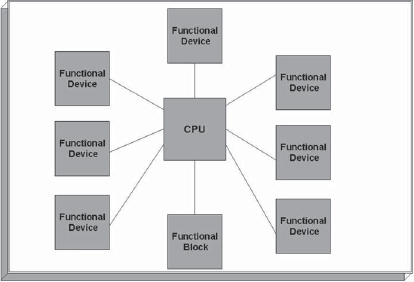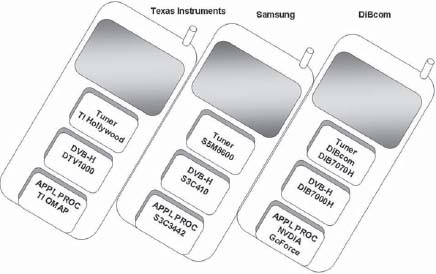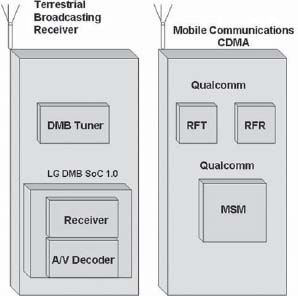CHIP SETS FOR MOBILE TV AND MULTIMEDIA APPLICATIONS
If the automobile had followed the same development cycle as a computer, a Rolls-Royce today would cost $100 and give a million miles per gallon.
—Robert X. Cringely, American writer
The chip set industry in the past has been benchmarked by Moore’s Law, which predicted that the component density and computing power of devices will double every 18 months. True to form the industry has kept pace with the predictions. However, few, including Gordon Moore, the cofounder of Intel, himself, could have imagined the new challenges the industry would be grappling with the mobile world. It was no longer about processing power alone, which was needed in hundreds of millions of instructions per second (MIPS) in any case. The mobile industry demanded low power consumption and a single chip for all functionalities, including receiver, decoder, processor, players, display, drivers, et al. And to top it off, it demanded that the same chip also do it for every standard of mobile TV, be it DVB-H, terrestrial DMB (T-DMB), DAB-IP, or even DVB-T. And finally it had to be cheap. As an ultimate demand, 18 months could no longer be permitted for such changes to be ushered in. In 18 months the industry changes beyond recognition.
The chip set industry kept its date with time. Single chips are here for full functionalities of mobile TV. Some of them cost below $10 and are expected to go below $5 in a year. And they support virtually every available mobile standard in a country. Not a month passes by when a new chip set with unmatched functionalities is not announced. Handsets, which follow the chip sets, appear at a rate of more than one a week.
Many of these developments are indeed needed to match the developments happening in the mobile TV and multimedia industry. Without these the industry cannot become a mass industry of hundreds of millions of users. Knowing that just one standard cannot become dominant in a particular country in the near future, the industry has scrambled to bring forth multiple-standard functionality in its chip sets. These chips available from vendors such as Phillips, Dibcom, Freescale, Samsung, Texas Instruments (TI), Broadcom, and others range from single standard chips for mobile TV to multistandard multiband chips, which can support DVB-H or ISDB-T standards in UHF or L-bands. Examples are plenty. Siena Telecom, Taiwan, has a chip set (SMS1000) that supports DVB-T, DVB-H, DAB-IP, and DVB-T. In the United States, where MediaFLO is a strong contender along with DVB-H, Qualcomm has already announced its universal broadcast modem, which supports DVB-H, ISDB-T, and MediaFLO technologies.
Recognizing the need for low prices for a mass market penetration the industry has been quick to bring to the market chip sets (or systems-on-chip) and in some cases single chips to enable the design of mobile phones at low cost. The DVB-H chip set is now slated to cost less than $10 and will move to sub-$5 levels by the end of 2007. The markets for these services are quite large and volumes as the services take off will lead the price and demand curve to attain very high levels of penetration.
11.1 INTRODUCTION: MULTIMEDIA MOBILE PHONE FUNCTIONALITIES
A low-cost mobile phone with basic functionality can be made by using a single chip such as the TI “LoCosto” series, in which the phone can be retailed at sub-$20 levels.
When we enter the domain of multimedia phones, a number of functions that need to be supported become evident. The mobile devices are now expected to be able to receive streaming video and audio from the network, set up video calls, transfer messages with multimedia content, and in general handle rich media. A multimedia phone needs to support the following functions:
• video and audio codecs conforming to JPEG, H.264, H.263, AAC, AMR, MP3 Windows Media, and other common standards;
• video and audio players;
• video and audio streaming;
• graphics and image display;
• a camera or video camcorder, including JPEG encoding for camera picture;
• formats conversion for video and audio;
• rendering of animation and graphics;
• 3D rendering;
• network interfaces with high error resilience;
• multiple serial and wireless interfaces for delivering video and audio; and
• communications, including error correction and connectivity to 3G and other networks (Fig. 11-1).
11.2 FUNCTIONAL REQUIREMENTS OF MOBILE TV CHIP SETS
So how does a phone design handle all these functions? It is evident that the following functional blocks are needed to complete the requirements:
1. A processor or microcontroller is necessary for handling keypad, displays, wireless LAN, USB, and Bluetooth interfaces.
2. A communications engine is needed to work on 3G GSM or CDMA networks in various bands. The communications engine consists of RF transceivers and the appropriate type of modem for 3GSM or CDMA networks deployed, i.e., 3G, HSDPA, or CDMA2000 and EV-DO. In some cases the phone is designed to work on multiple standards such as 2.5G/3G GSM and CDMA2000 1×.
3. A broadcast mobile TV receiver such as for DVB-H, T-DMB, S-DMB, or ISDB-T networks is necessary. In practice a single system-on-chip (SoC) can handle the functions of tuner and mobile TV decoder. Such implementations in the industry are becoming common.
4. A multimedia engine is required to handle encoding and decoding of audio and video and rendering of graphics and animations and to handle camera-generated images and video.
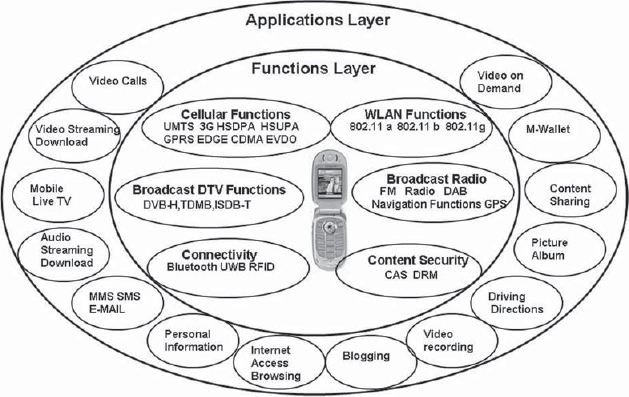
FIGURE 11-1 Handset Functions in the Multimedia Environment
The functions of the microcontroller and the communications transceiver are generally handled in one functional module called the baseband processor. This essentially means that a multimedia phone can be realized by the base band processor, the mobile TV decoder, and the multimedia processor (or applications processor) together with some ancillary chips (e.g., for clock generation) (Fig. 11-2).
Terms such as “baseband processor,” “applications processor,” and “multimedia processor” are in fact industry nomenclature for a group of functions that are performed by these chips. The functions performed may vary from one chip set manufacturer to another or between different technology implementations, such as CDMA-BREW and 3G-GSM.

FIGURE 11-2 Mobile Phone Architecture
In the industry it is also common to classify the phones in different categories such as basic phones, smart phones, and office phones (such as pocket PCs or PDAs). The term “multimedia phone” is a new addition to the nomenclature that became necessary to distinguish the new generation of phones with a focus on rich media and multimedia services. The handset functions are covered in detail in Chap. 13. It would suffice to say here that the basic phones perform the essential communication functions of voice call and SMS and support simple functions such as address book. The smart phones add on perhaps a camera, MMS capabilities, 3GPP video streaming, and downloading services, with storage capabilities and ancillary features such as Bluetooth, USB, and animations. But it is primarily the multimedia phones that require the highest resources. These phones may support very high resolution cameras (e.g., 5 Mpixel), advanced 3D games, image processing, video storage and processing; have a memory of 2 GB or more; and handle multiple formats of audio and video. In order to handle the multimedia-related functions that dominate the phone’s functions it is common practice to use a separate multimedia processor. The multimedia processor or applications processor is designed to be an engine for handling the video, audio, and images by the phone. It needs to handle their encoding and decoding and the rendering of frames. Typically a multimedia processor will handle all functions for 3GPP encoding and decoding for the phone’s communications functions and other formats such as MP3, AAC audio, and H.264 video for multimedia functions.
11.2.1 Realizing Mobile Phone Designs—Systems-on-Chip
It is evident that the functions needed to be performed by a device such as a multimedia processor or a baseband processor are application specific and, moreover, they are closely related (examples are a tuner, A/D converter, and decoder). It is more efficient to realize such functions using a system-on-chip approach. An SoC is an application-specific integrated circuit where often one “piece of silicon” or chip can contain all the functions required of a mobile phone. The development costs of such chip may be higher but in volume productions there is considerable advantage in simplicity at the end design realization. An example of an SoC is the baseband processor, which typically involves the functions of the controller, which controls the keyboard, screen, and I/O functions, and the digital signal processor (DSP), for voice coding (e.g., in AMR-NB). This leaves the multimedia functions of the phone to be handled by the multimedia processor, which may be another SoC (Fig. 11-3).
SoC’s are designed using the VHSIC HDL (Very High Speed Integrated Circuit Hardware Description Language) and VHDL (a structural language describing the device). The high-level languages are used to develop the functional blocks needed on the SoC. Some functional blocks that are widely used in the industry, such as processor cores, are standard and available against payment of royalty for the intellectual property, while others are open source and available for free use.
11.2.2 Mobile Phone Processor and Memory
The processors for mobile phones may be embedded as part of an SoC or can be independent devices. The common processors used include ARM (Advanced Risk Machine), Motorola Dragonball, MIPS, TI’s OMAP series, and Intel Xscale. The processors run at between 50 and 500 MHz depending on the phone type and applications supported. In general the advanced multimedia phones will have higher speed processors and memory. The memory in phones varies from 16 to 64 Mbytes for smart phones.
FIGURE 11-3 System-on-Chip Architecture
11.3 CHIP SETS AND REFERENCE DESIGNS
The mobile industry is continuously being driven by the need for high-quality handsets that support both 3G and multimedia applications. This is not surprising since over 60 million WCDMA phones were in use in June 2006. Handsets in which the circuitry is reduced to a single chip are indeed candidates for such volume production.
Typically a manufacturer provides full developer support with the chip set, including a reference design to reduce time for development and to deliver a new product to the market. A typical reference design can include:
• component list with board design and layout,
• wireless application suite that has been validated,
• complete solutions for multimedia as well as personal information management applications and application program interfaces (APIs),
• operations system support, and
• test kits and test environment tools.
In most product lines there is a constant development toward increased processing power, lower power consumption, higher integration of components, newer functionalities such as WLAN, etc. There is always an effort to keep the upward developments compatible with previous versions and have software reusability in order that the new mobile phones have the least time to market while adopting new technology and chip sets.
A typical chip set and reference design is the TI Hollywood chip set. The TI architecture is based on its OMAP platform. The single-chip mobile solution consists of an SoC with an OMAP processor (an applications processor or multimedia processor) and a digital TV baseband processor chip. The baseband processor chip is available for DVB-H (DTV1000 chip) or ISDB-T (DTV1001 chip) (Fig. 11-4).
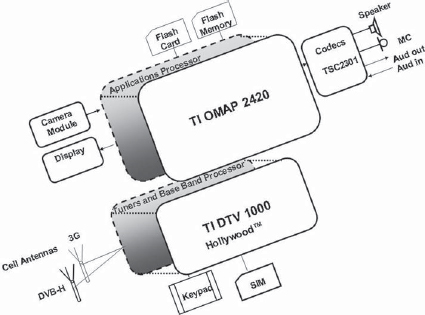
FIGURE 11-4 Texas Instruments Single-Chip Solution for High-Performance Multimedia Phone
Designed for broadcast digital TV in DVB-H or ISDB-T formats, the chip contains the tuner (UHF or L-band), OFDM demodulator, and DVB-H or ISDB-T decoder to generate the video. It is the first industry implementation of tuner and demodulator into one silicon chip. The chip is designed using a low 1-V RF CMOS process and power-efficient design thus requiring only 30 mW of power for a class B DVB-H terminal. Combined with OMAP application processors the chip set can deliver 4–7 hours of TV viewing time depending on display size and battery rating. (It should be recognized that the term “single-chip solution” denotes a broadcast TV reception solution. The handset would have additional chips, e.g., for being on a CDMA or a GSM network.)
The DTV1000 supports DVB-H operating at 470–750 MHz (UHF) and 1.670–1.675 GHz (L-band) frequency ranges, while the DTV1001 supports ISDB-T one-segment operating at the 470–770 MHz frequency range.
Figure 11-5 shows a reference design implemented using a DTV100X chip (source: Texas Instruments). The chip has UHF and L-band (1.6 GHz) front ends, an analog-to-digital converter, OFDM demodulator, MPEG-2 TS demultiplexer, and MPE-FEC decapsulator (or link layer buffer). The received DVB-H signals, for example, are TS demultiplexed and the FEC is applied to generate the received data. The data is buffered and delivered as SDIO output to an applications processor for further handling.
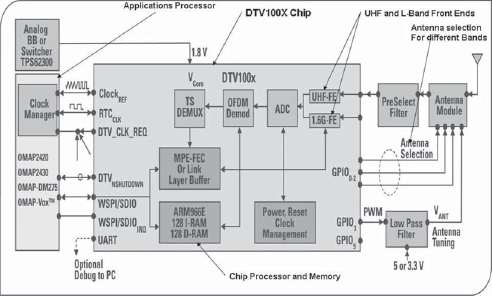
FIGURE 11-5 Texas Instruments DTV100X Chip Reference Architecture (Picture Courtesy of Texas Instruments)
The chip is powered by its own ARM966E processor core with independent 128 + 128 Mbytes of RAM and is not dependent on the cell’s processor, making the interfacing and software structure simple.
11.4 CHIP SETS FOR 3G MOBILE TV
Chip sets for 3G technologies provide the basic functions of RF transceiver for the networks, decoding of signals to baseband, and multimedia processing. There is no need to have a broadcast receiver (such as for DVB-H, DMB, or ISDB-T) and such implementations are possible using single-chip processors for realizing handsets. 3G applications include video calls, videoconferencing, streaming video and audio, and interactive gaming. In addition Internet access applications such as browsing, file transfers, VoIP, and others need to be supported. Support for graphics applications based on SVG, J2ME, and 3D gaming applications is also required. However, as additional functions are incorporated to produce feature phones and smart phones, leading to multimedia phones, it is common to move toward a design with an independent applications processor.
A typical implementation of a 3G handset can use only one OMAP1510 processor. It has a dual core architecture, which makes the chip suitable for multitasking, common in multimedia applications. OMAP architecture figured in the launch of Japan’s FOMA service, which used such processors extensively in its FOMA 900i series of phones (Fig. 11-6).
There are many other implementations for mobile phones based on OMAP1510. China’s Datang, which has developed the technology for TD-SCDMA, has a phone design based on Linux and OMAP1510 for use in the Chinese 3G markets.
FIGURE 11-6 A 3G Phone Chip Set Example
11.4.1 CDMA2000 1×Chip Set
CDMA2000 1× is a proprietary technology of Qualcomm. Qualcomm has chip sets for the CDMA2000 1× communications processor. An example of a CDMA2000 1× phone that can also support GSM/GPRS (and is therefore good for roaming) comprises the Qualcomm communications processor MSM6300. It works for GSM, GPRS, and CDMA through Qualcomm’s cdmaOne chip set (termed aptly the “Global Roaming Chip Set”) comprising RFR6000 and RTR6300. The RTR6300 chip set is a dual-band GSM transceiver and a dual-band CDMA2000 1× transmitter, while the RFR6000 is a CDMA2000 1× and GPSOne receiver.
Multimedia capabilities are provided by Intel Applications Processor PXA270. A typical implementation is in the Samsung SCH-i819 mobile phone for the Chinese 3G network, which is based on a Linux platform. MSM6300 chips support Qualcomm’s binary runtime environment for wireless (BREW) applications platform (Fig. 11-7).
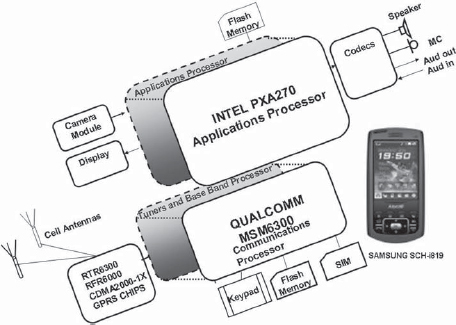
FIGURE 11-7 CDMA and GSM Chip Set Phone Example (China’s Samsung SCH-i819)
11.4.2 3G Chip Sets MBMS (Mobile Broadcast/Multicast Service over 3G)
MBMS services unleash the power of multicast and broadcast technologies to deliver high-bandwidth services to millions of users simultaneously, a feature that is impossible in the unicast environment on the 3G networks. One of the chip set solutions available for MBMS is the Mobile Station Modem (MSM7200) from Qualcomm. The chip set has support for BREW and Java and can use applications developed such as:
• QTV—video playback at full VGA resolution at 30 fps,
• Qcamcorder—recording at 30-fps VGA resolution,
• Q3Dimension—animation and 3D graphics at 4 million triangles per second, and
• GPSOne—position location applications.
The MSM7200 is dual-core processor based and supports HSDPA at rates up to 7.2 Mbps and HSUPA at rates up to 5.6 Mbps.
11.4.3 3 G Chip Set for 1×EV-DO Technologies
1×EV-DO services are being offered by a number of operators, including KDDI, Japan; SK Telecom, Korea; Vespar, Brazil; Telstra, Australia; and others. Qualcomm has the Mobile Station Modem range of chip sets, which delivers functionality to handle 3G CDMA-based networks including the 1×EV-DO. One of the latest releases of the series is the MSM6800 chip set providing advanced functionality. The chip set is used in conjunction with transceivers such as RFR6500 and RFT6150 and the power management solution chip PM6650.
11.4.4 Chip Set for MediaFLO
MediaFLO is a proprietary technology of Qualcomm and uses the 700-MHz band for FLO (forward-link-only technology) using unicast and multicast over CDMA networks. Qualcomm has unveiled the MSM6500 chip set targeted at powering the new generation of 3G handsets (Fig. 11-8).
11.5 CHIP SETS FOR DVB-H TECHNOLOGIES
DVB-H mobile TV consists of a UHF or L-band transmission together with COFDM modulation. The video signals are coded in MPEG-4/AVC. The chips for DVH mobile TV therefore need to contain the following elements:
• antenna selector for the DVB-H (UHF, L-band) and GSM bands,
• tuner for UHF and L-bands,
• demodulator for COFDM,
• decrypters for the encryption system used, and
• decoders for video and audio.
We have already seen an example of a DVB-H chip set with the TI Hollywood T1000 digital TV chip coupled with the OMAP 2420 processor to provide a complete multimedia phone solution. There are other chip sets that achieve the same functionality.
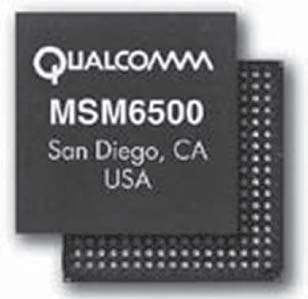
FIGURE 11-8 MSM6500 Chip Set for CDMA and MediaFLO (Picture Courtesy of Qualcomm)
11.5.1 DIB7000-H Chip Set
DiBcom has introduced a chip set for DVB-H that is based on the use of open standards. This chip set, the DIB7000-H, has found implementation in Sagem, BenQ, and other manufacturer’s phones. DiBcom has come out with a reference design for a multimedia phone by using an NVIDIA GoForce graphics processing unit, which provides high-quality video encoding and decoding on the mobile phone resulting in delivery of high-quality graphics and pictures. The reference design is completed with the DiB7070-H mobile DVB-H/DVB-T integrated receiver. The receiver features VHF, UHF, and L-band operation, which would permit its use in Europe, Asia, and the United States (e.g., Modeo DVB-H service in the L-band). The receiver features up to 130-Hz Doppler shift, which means it can be used at moving speeds up to 350 km/hour (in 4K mode) in the UHF band (750MHz) and up to 208 km/hour in the L-band at 1.67 GHz.
Alternative implementations with the RF tuner from Freescale, MS44CD02C, are possible. DVB-H chip sets reduce power consumption by using a time-slicing feature for activation of the tuner. The DIB7000-H claims a consumption of only 20 mW as against 200 mW for DVB-T receivers.
DIB7000-H can be used with many operating systems, including Symbian, Linux, and Windows Mobile 5. The company has also ported the drivers of the chip set with the Windows CE operating system. Based on the use of the Windows Mobile software, the chip sets have been integrated and available in various handsets, including Siemens. DiBcom also has a reference design available based on this chip set.
The NVIDIA G5500 GPU has the capability of encoding and decoding full motion video at 30 fps (i.e., NTSC) with a resolution of 700 × 480. The chip has onboard codecs (encoders and decoders) for H.264, Windows Media 9, RealVideo, and JPEG. It also has a display controller for XGA (1024 × 768) and 10-Mpixel camera. The reference design with NVIDIA is available with Linux drivers.
11.5.2 Samsung Chip Set for DVB-H
Samsung has introduced a DVB-H chip set that has the distinction of being an SoC, with integrated tuner S5M8600 and DVB-H/DVB-T channel decoder S3C4F10. The integrated tuner features Zero-IF, which helps it reduce power consumption further. The chip set is designed for international markets including the United States (1670–1675MHz), Europe (UHF and L-band 1452–1477), and Asia (UHF).
Figure 11-9 showing DVB chip sets depicts only the implementation of the mobile TV tuner, decoder, and baseband and multimedia processors. In addition the chip set for mobile communications (i.e., for 3GSM or 3G-CDMA networks) is present based on the network where used.
As an example, a DVB-H set used in Europe may have a 3GSM chip set in addition to DTV and multimedia processor functions, whereas one used on a CDMA network in United States may have the Qualcomm MSM and RFT, RFR chip set.
In order to begin looking at the DMB chip sets for mobile TV, we need to understand DAB reception, which follows the same physical layer as T-DMB. The Eureka 147 DAB receivers need to receive RF, down convert the signal, demodulate, and synchronize to the ensemble multiplex stream. The Fast Information channel, which is a part of the multiplex, provides all information on the services carried in the ensemble. The receivers consist of a front end to receive the RF from the antenna and down convert it before it is given to a DSP chip, which carries out the functions of synchronizing to the ensemble.
A number of chips are available for this purpose, including the Phillips DAB452 DAB receiver, Texas Instruments DRE200 and DRE310, and Chorus 2FS1020 chips. Complete integrated modules are also available, which have the front end components as well as the DAB receiver chip, such as the Radioscape RSL300 DAB/FM receiver, which has the Texas Instruments DRE310 DAB chip integrated in the module.
11.7 CHIP SETS FOR DMB TECHNOLOGIES
DMB mobile TV broadcasts consist of two technologies, i.e., T-DMB and S-DMB. In Korea the T-DMB has a bandwidth of 1.57 MHz, while S-DMB transmissions have a bandwidth of 25 MHz in order to accommodate very high FEC, which is essential for low-strength satellite signals.
LG has the credit of launching the first T-DMB handset in September 2004 with a T-DMB SoC. The DMB SoC 1.0 featured the DMB receiver and A/V decoder. The following functionalities were included in the DMB SoC:
• OFDM decoder;
• MPEG-2 transmit stream demultiplexer;
• Eureka 147 data decoder;
• H.264 baseline profile 1.3 decoder (CIF 30 fps);
• audio decoder for BSAC (MUSICAM), MP3, AAC+; and
• mobile XD engine adaptation.
The receiver part of the SoC provided the OFDM demodulator and RS decoder functions (Fig. 11-10).
The mobile communications part of the phone (for the CDMA network in Korea) were achieved by using the Qualcomm chip set comprising an MSM together with a cdmaOne transceiver set for CDMA2000 1×. LG T-DMB SoC’s were used in the mobile phone LGU100.
Other chip sets support multimode mobile TV broadcast operation. An example is the Phillips “TV on Mobile Solution,” which comprises a tuner, channel decoder, and MPEG decoder together with full software stacks for IPDC, DVB-T, or DVB-H. The software stack also supports DVB-H middleware, an electronic service guide, and PSI/SI tables. The solution consists of a TV on mobile chip (with tuner, channel decoder, and demodulator) and Nexperia PNX4008 MPEG source decoder. The tuner has a power consumption of only 20 mW in VB-H mode, which can enable handsets with 7 hours of viewing time. The power consumption is 150 mW in DVB-T mode. The PNX4008 is an advanced multimedia processor. The chip set was designed to be used globally, as it supports multiple band reception including the L-band for DVB-H in the United States and Europe.
An example of a recent chip set for the DMB/DAB-based services is the Kino-2 launched by Frontier Telecom. Kino-2 is a true multimode device with built-in flexibility through software customization, supporting all T-DMB variants as well as DAB and DAB-IP in a single chip. The flexibility offered by Kino-2 enables advanced features such as conditional access and data services to be implemented in the software. When Kino-2 is combined with the multiband capability of the Apollo silicon tuner, handset vendors can produce mobile TV-featured devices that are compatible with the requirements of all T-DMB markets worldwide.
Kino-2 also provides full support for DAB digital radio. By integrating Kino-2 into a mobile phone a manufacturer is able to offer consumers a product that can be used to enjoy high-quality TV and radio services.
11.7.1 Chip Set for S-DMB Services
Samsung was the first to introduce the chips for DMB mobile TV-based services in 2004, which led to their deployment in the Korean DMB launch in September 2005 in the form of handset SCH-B100. Subsequently a series of phones was introduced: SCH-B130, SCH-B200, SCH-B250, and SCH-B360.
11.7.2 Chip Sets for GPS Services
GPS is the acronym for Global Positioning System and the services are provided by a constellation of 24 satellites at an altitude of 20,183 km. The GPS services help a user identify his location to within a few meters using the Standard Positioning Service. A Precision Positioning Service is also available for military use. GPS receivers, which work directly with the satellites, have a receiver module that can receive a signal from up to 12 satellites.
Many of the phones are designed to work with GPS data and present it in the form of map guides and position-location information for which they need to have the requisite software (e.g., HPiPAQ rx 5900). Subscription to the GPS services can be obtained through the mobile carrier for access to maps based on the location information provided by the GPS system in the cell phone. For example, in the United States, Sprint Nextel offers TeleNav and ViaMoto. Alternatively, software packages obtained by subscription can permit stand-alone GPS services to be used independent of the carrier. Enhanced 911 services in the United States require all new cell phones to have GPS position-location capabilities. The key requirement of chip sets in mobile phones for GPS is low power consumption, quick fix capability, and capability to work with low signal levels due to limitations of antennas.
GPS technology is available from Qualcomm (GPSOne) and has been used in a number of handsets from different manufacturers. One of the new chip sets available for GPS reception in cell phones is the SiRF Star III chip set from SiRF Technologies, which has low power consumption and gives a quick fix on the position.
11.8.1 Multimode Multifunction Devices
The new trend in the mobile industry is undoubtedly the convergence of cellular and broadcasting in handsets. This implies that the handsets are invariably multinetwork (3G-GSM and 3G-CDMA) compatible and also capable of receiving multimode broadcasts in different frequency bands. Multinetwork functionality and capability of receiving mobile TV broadcasts in multiple standards means that phone models launched need not be restricted to a particular country and hence can be mass produced. This also permits global roaming across many networks.
11.8.2 Single Chips for Complex Applications
An example of such a processor is the SH-Mobile L3V multimedia processor from Renesas Technologies. The multimedia processor chip comprises a CPU core and a video processing unit. The CPU gives a processing performance of 389 MIPS at 216 MHz, i.e., 1.8 MIPS per megahertz of clock speed.
The multimedia processor is designed to handle video rendering at full VGA resolution and frame rates of 30 fps. This makes its use possible in the Japanese market, where the phones such as LG U900 come equipped with a 3G, DVB-T, and ISDB-T (one-segment broadcasting) as well as analog NTSC TV receiving capability. LG U900 phones were used by Hutchison Italia (3 Italia) for the FIFA World Cup 2006 (Fig. 11-11).
The SH-Mobile L3V multimedia processor can interface with a camera with 5 Mpixel rating and provide display through a 24-bit LCD interface with 16 million colors. Its high processing power enables it to take one picture in just 0.02 sec. The unit is designed for reception of ISDB-T or T-DMB broadcasts, which means that it must process (encode and decode) H.264 or MPEG-4 in real time. It can process IP-based data and provide support to services such as video calls and video mail.
FIGURE 11-11 LG U900 DVB-H and 3G Phone (Picture Courtesy of LG)
Handling of analog or DVB-T broadcasts is a very processor-intensive task due to the need for scaling of video from full-screen PAL/NTSC resolution to QVGA and scaling up the frame rate from 30 to 60 fps for clear display and transcoding between MPEG-2 and MPEG-4 or 3GPP. Multimedia processors now have sufficient processing power to accomplish these tasks.
11.9 OUTLOOK FOR ADVANCED CHIP SETS
Chip sets are constantly being developed along with the advancement of the technologies for mobile networks. Newer chip sets need to be available as 3G networks evolve to HSDPA and beyond. 3GPP release 7 is set to usher in a new cycle of developments in the mobile phone industry. The multimedia capabilities are also on the increase. Camera resolutions are going up and the latest chip sets can support upward of 8-Mpixel resolution. The display resolutions are also going up to full VGA (640 × 480 pixels) instead of merely QVGA (320 × 240). New multimedia applications with new codec types are becoming common to support new applications. The new applications such as gaming require very high speed animations capability, which was formerly available in very high speed graphics processors only. The chip sets are evolving to support such applications.

